USGA Age 10 Breaking Barriers – Allisen Corpuz, the 10 Year Old Prodigy Competing in the USGA Championship
In the realm of golf, where experience and maturity often dominate, the story of Allisen Corpuz stands as a remarkable testament to youthful talent and determination. USGA age 10, Allisen Corpuz from Kapolei, Hawaii, achieved a historic milestone by becoming the youngest competitor in U.S. Golf Association (USGA) history. This extraordinary feat was realized during the U.S. Women’s Amateur Public Links Championship, a prestigious event that showcases the finest amateur talent in the nation.
Allisen’s participation in the championship was more than just a record-setting moment; it was a vivid illustration of the potential and promise inherent in young athletes. Standing at a mere five feet tall and weighing 111 pounds, Allisen’s physical presence might have seemed diminutive compared to her competitors, but her performance was anything but small. Over two challenging days, she demonstrated skill, composure, and a deep love for the game, ultimately shooting a 15-over-par 88 in the second round, culminating in a two-day total of 169. Although she fell nine strokes short of the 160 cut required to advance to match play, her participation was nothing short of sensational.
Allisen’s entry into the championship did not merely mark a personal achievement; it also underscored the significance of the event itself. The U.S. Women’s Amateur Public Links Championship has a storied history of highlighting amateur golf talent, often serving as a springboard for future professional success. Allisen’s historic debut at such a young age not only captured the imagination of the golfing community but also inspired a new generation of young golfers. Her journey, filled with perseverance and the unwavering support of her family, especially her father Marcos Corpuz, who introduced her to golf at the age of four, is a powerful narrative of passion and early promise in sports.
Background Information
U.S. Women’s Amateur Public Links Championship
The U.S. Women’s Amateur Public Links Championship, often referred to as the WAPL, holds a special place in the annals of amateur golf. Established by the United States Golf Association (USGA) in 1977, the championship was designed to provide a competitive platform for female golfers who do not come from private club backgrounds. This inclusivity has allowed a diverse array of talented golfers to showcase their skills on a national stage.
Over the years, the WAPL has grown in prestige, becoming a significant event in the amateur golf calendar. The tournament’s format, which includes both stroke play and match play, challenges golfers to excel in different aspects of the game, testing their consistency, strategic thinking, and mental toughness. Many participants have gone on to successful professional careers, making the WAPL a crucial stepping stone for aspiring golfers.
The importance of the WAPL extends beyond the individual achievements of its competitors. The tournament has played a vital role in promoting women’s golf, highlighting the depth of talent in the amateur ranks and encouraging young girls to pursue the sport. It has also fostered a sense of community and camaraderie among participants, many of whom form lasting friendships and professional networks through their involvement in the championship.
Allisen Corpuz: Early Life and Golf Background
Allisen Corpuz, a name now etched in the history of the USGA, hails from Kapolei, Hawaii. Born into a family with a deep appreciation for golf, Allisen’s journey into the sport began at a remarkably young age. Her father, Marcos Corpuz, a golf enthusiast himself, introduced Allisen to the game when she was just four years old. This early exposure ignited a passion for golf that would shape her formative years.
From the outset, it was evident that Allisen possessed a natural affinity for the game. Her keen interest and dedication set her apart, and her family played a pivotal role in nurturing her talent. Marcos Corpuz recognized his daughter’s potential and provided unwavering support, both emotionally and practically, by facilitating her training and participation in various tournaments.
Allisen’s early achievements in golf are a testament to her hard work and innate skill. By the age of six, she was already competing in local junior tournaments, where she consistently performed well, often outshining older competitors. Her ability to maintain composure under pressure and her impressive technical skills quickly earned her recognition within the junior golf circuit.
As Allisen’s passion for golf grew, so did her commitment to honing her craft. She underwent rigorous training, balancing her academic responsibilities with a demanding practice schedule. Her father’s guidance was instrumental during this period, as he not only coached her but also instilled in her the values of discipline and perseverance.
The Corpuz family’s support extended beyond immediate relatives, with the local golf community in Kapolei rallying behind the young prodigy. Coaches, mentors, and fellow golfers contributed to Allisen’s development, providing her with valuable insights and encouragement. This collective support system was crucial in helping Allisen navigate the challenges of competitive golf at such a young age.
In summary, Allisen Corpuz’s early life and golf background are characterized by a blend of familial support, personal determination, and a nurturing community. Her journey from a curious four-year-old to the youngest competitor in USGA history is a compelling narrative of passion, talent, and the powerful influence of a supportive environment. This foundation has not only enabled her to achieve remarkable feats at a young age but also set the stage for her future endeavors in the world of golf.
Allisen Corpuz’s Performance
Tournament Details
The U.S. Women’s Amateur Public Links Championship was held at the prestigious Erin Hills Golf Course, located in the rolling hills of Wisconsin. Erin Hills is renowned for its challenging layout, which demands precision and strategic play from golfers. The course features undulating fairways, deep bunkers, and large, fast greens, all of which test a player’s full range of skills.
The championship spanned two days of stroke play, after which the top 64 golfers advanced to match play. This initial phase was crucial, as it set the stage for the subsequent rounds. The cut line was set at a cumulative score of 160, meaning only those who scored at or below this threshold would progress. This stringent requirement underscored the high level of competition and the skill required to succeed.
Performance Analysis
Allisen Corpuz’s debut at Erin Hills was nothing short of impressive, especially considering her age and experience. In the second round, she posted a score of 88, bringing her two-day total to 169. While this score was nine strokes above the cut line, it was a commendable effort for the youngest competitor in the field.
Throughout the tournament, Allisen displayed remarkable consistency and composure. Her ability to hit straight 200-yard tee shots and consistently long 3-woods gave her a solid foundation. However, she struggled with her short game, particularly putting, which significantly impacted her overall score. Despite these challenges, her performance was notable for a golfer of her age and stature.
In comparison to her college-aged competitors, Allisen’s performance was respectable. For instance, Molly Schemm of the University of Wisconsin-Madison finished with a total score of 166, and Mallory Fraiche of the University of Arkansas posted a 167. These scores highlight the competitive nature of the tournament and underscore the achievement of Allisen, who was competing against much older and more experienced golfers.
Challenges and Strengths
Allisen Corpuz’s performance at Erin Hills highlighted both her strengths and areas for improvement. One of her most significant strengths was her driving accuracy. Her ability to consistently hit straight and long tee shots was a crucial asset, allowing her to navigate the challenging fairways of Erin Hills effectively.
Another strength was her proficiency with long 3-woods. These shots often placed her in advantageous positions, giving her opportunities to approach the greens with shorter irons. Her calm demeanor and ability to maintain composure under pressure were also noteworthy, reflecting a maturity beyond her years.
However, Allisen’s performance revealed areas where she could improve. Her short game, particularly her putting, was a notable weakness. Missed putts and difficulties on the greens contributed to her higher scores. Improving her putting technique and gaining more experience in pressure situations could significantly enhance her future performances.
In summary, Allisen Corpuz’s participation in the U.S. Women’s Amateur Public Links Championship was a remarkable achievement. Her performance showcased her potential as a young golfer and highlighted both her strengths and areas for improvement. Competing at such a high level at just 10 years old is a testament to her talent and dedication, and it sets the stage for a promising future in golf.
Impact and Significance
Historical Context and Comparison
Allisen Corpuz’s entry into the U.S. Women’s Amateur Public Links Championship as the youngest competitor in USGA history draws inevitable comparisons to other young prodigies who have made their mark in golf. Notably, Michelle Wie, another Hawaiian golfer, previously held the record for the youngest competitor in this tournament. Wie was 10 years and 9 months old when she competed in 2000, setting a high bar for young golfers. Allisen, at just 10 years and 3 months, broke this record, emphasizing the trend of exceptionally young talent emerging in the sport.
Michelle Wie’s career serves as a benchmark for young golfers like Allisen. Wie’s early start in competitive golf paved the way for a successful professional career, inspiring many young girls to pursue the sport. Similarly, Yani Tseng and Mina Harigae, both of whom made significant impacts at young ages, highlight the historical achievements of young female golfers. Tseng won the U.S. Women’s Amateur Public Links at 15 and later became the youngest player to win five major championships in professional golf. Harigae, who won the Public Links at 17, also exemplifies the success that young talent can achieve.
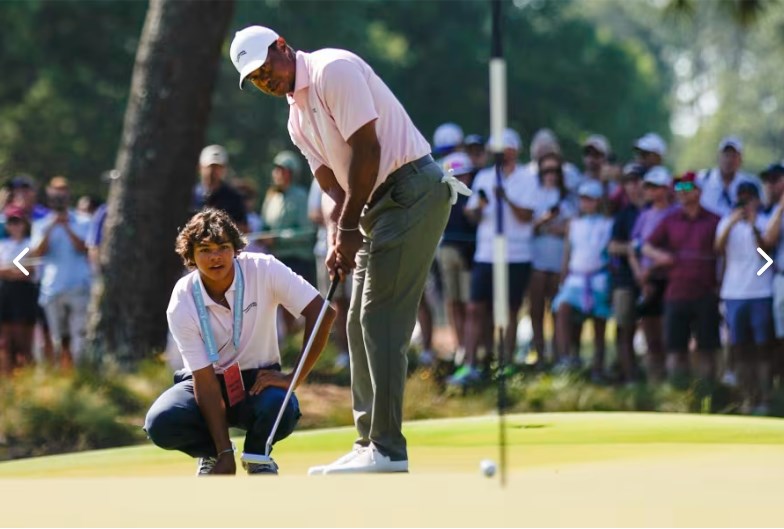
The impact of these young golfers extends beyond their personal achievements. They have collectively shifted the perception of what is possible at a young age in golf, encouraging younger players to compete at high levels and pushing the boundaries of the sport. This trend has also led to increased support and resources for junior golf programs, fostering the development of future stars.
Public and Media Reaction
Allisen Corpuz’s historic participation in the U.S. Women’s Amateur Public Links Championship garnered significant media attention and public interest. News outlets and golf publications widely covered her story, celebrating her as a young prodigy and highlighting her achievements. The media coverage not only brought attention to Allisen’s talent but also underscored the importance of supporting young athletes in their pursuits.
The public reaction to Allisen’s performance was overwhelmingly positive. Fans of golf, particularly those who follow junior and amateur tournaments, were inspired by her dedication and composure. Social media platforms buzzed with praise for her achievement, with many expressing admiration for her skill and determination at such a young age. The broader golf community, including professional golfers and coaches, also took note, offering words of encouragement and support.
The reception within the golf community was particularly significant. Allisen’s participation and performance were seen as a testament to the potential of young athletes in the sport. Her ability to compete alongside much older and more experienced golfers highlighted the depth of talent in junior golf and reinforced the importance of nurturing this talent from an early age. The USGA and other golf organizations have long supported junior golf, but Allisen’s story brought renewed focus to these efforts, emphasizing the need for continued investment in youth programs.
In conclusion, Allisen Corpuz’s historic entry into the U.S. Women’s Amateur Public Links Championship as the youngest competitor had a profound impact on both the sport and its community. Her achievement drew important comparisons to past young prodigies, highlighting a legacy of youthful excellence in golf. The media and public reaction further underscored the significance of her accomplishment, inspiring young athletes and reaffirming the importance of supporting junior golf programs. Allisen’s story is a powerful reminder of the potential for greatness that lies within young athletes, setting the stage for a promising future in golf.
Personal Insights and Family Support
Allisen’s Personal Experience
Allisen Corpuz’s journey into the U.S. Women’s Amateur Public Links Championship as the youngest competitor in USGA history was a defining moment in her young career. Reflecting on her experience, Allisen expressed a mix of excitement and humility. “It was nice,” she said shyly, her soft-spoken nature belying the significant achievement. Despite her young age, Allisen demonstrated a level of composure and maturity that impressed both spectators and fellow competitors.
Her reflections on the tournament reveal a mindset grounded in passion for the game and a willingness to learn from every experience. Allisen noted that competing at such a high level was both challenging and exhilarating. She acknowledged the difficulties she faced, particularly with her short game, but remained focused on the positives. “I learned a lot,” she remarked, highlighting her eagerness to improve and grow as a golfer. This attitude of continuous improvement is a hallmark of successful athletes, and Allisen’s early embrace of this mindset sets her apart.
During the tournament, Allisen’s composure under pressure was particularly noteworthy. She consistently maintained her focus, even when faced with setbacks on the course. When asked about her ability to stay calm, Allisen credited her father, Marcos Corpuz, for teaching her to manage her emotions. This composure not only helped her navigate the challenges of the championship but also underscored her potential for future success in competitive golf.
Role of Family
The role of Allisen’s family, particularly her father Marcos Corpuz, has been instrumental in her development as a golfer. Marcos, who introduced Allisen to golf at the tender age of four, has been a constant source of support and guidance. His decision to allow Allisen to start playing was driven by her persistent interest and enthusiasm for the game. “She was always saying she wanted to play with me and her brother,” Marcos recalled, highlighting the family’s collective involvement in her early training.

Marcos’s influence extends beyond introducing Allisen to golf; he has played a crucial role in her ongoing development. He has been her coach, mentor, and biggest supporter, often accompanying her to tournaments and providing emotional support. His presence at the U.S. Women’s Amateur Public Links Championship was no exception, despite the nerve-racking experience of watching his young daughter compete at such a high level. Marcos’s dedication to nurturing Allisen’s talent has been a cornerstone of her early success.
The influence of family in nurturing young athletes cannot be overstated. Allisen’s journey is a testament to the power of familial support in achieving excellence. Her family’s encouragement, coupled with their willingness to invest time and resources, has provided Allisen with a solid foundation to pursue her passion. This support system has enabled her to navigate the pressures of competitive golf while maintaining a balanced and positive outlook.
In addition to her father, Allisen’s brother and extended family have also played supportive roles. The collective effort of her family has created an environment where Allisen can thrive, both as a golfer and as a young individual. This nurturing atmosphere has been crucial in helping her develop the skills and confidence needed to compete at such a high level.
In conclusion, Allisen Corpuz’s debut in the U.S. Women’s Amateur Public Links Championship highlights the significant impact of personal dedication and family support. Her reflections on the experience reveal a young athlete with a mature mindset, poised for future success. The unwavering support of her father and family has been instrumental in her development, showcasing the vital role that family plays in nurturing young talent. Allisen’s story is a powerful example of how passion, perseverance, and familial support can combine to achieve remarkable feats in sports.
Broader Implications for Junior Golf
Development of Young Golfers
Allisen Corpuz’s participation in the U.S. Women’s Amateur Public Links Championship as the youngest competitor has significant implications for junior golf. Her achievement serves as an inspirational milestone for young golfers worldwide, demonstrating that with talent, hard work, and support, remarkable feats can be achieved at a young age. This inspiration is crucial for junior golf programs, which aim to identify and nurture young talent early in their development.
Young prodigies like Allisen play a pivotal role in shaping junior golf programs. Their success stories highlight the importance of providing access to quality training, resources, and competitive opportunities from an early age. Golf academies and junior programs are increasingly recognizing the need to create environments where young talents can thrive. These programs focus on developing fundamental skills, fostering a love for the game, and instilling values such as discipline, perseverance, and sportsmanship.

Early competition is another critical aspect of developing young athletes. Participating in tournaments at a young age exposes golfers to high-pressure situations, helping them build resilience and mental toughness. Competing against peers and older, more experienced players provides valuable learning experiences that can accelerate their growth. For Allisen Corpuz, playing in the U.S. Women’s Amateur Public Links Championship offered an opportunity to test her skills against some of the best amateur golfers, gaining insights that will be invaluable in her future endeavors.
Future Prospects
The future looks promising for Allisen Corpuz. Her historic achievement at the U.S. Women’s Amateur Public Links Championship is likely just the beginning of a distinguished golf career. With continued support and training, Allisen has the potential to achieve significant milestones in both amateur and professional golf. Her early exposure to high-level competition, combined with her talent and determination, positions her well for future success.
Predictions for Allisen’s future achievements include advancing further in national and international amateur tournaments, possibly winning titles at prestigious events like the U.S. Women’s Amateur Championship or the LPGA Amateur Championship. As she gains more experience and refines her skills, transitioning to a professional career could be a natural progression. Given her current trajectory, Allisen may follow in the footsteps of former prodigies like Michelle Wie and Yani Tseng, who made seamless transitions from amateur success to professional stardom.
The importance of continued support and training for young golfers cannot be overstated. Allisen’s journey underscores the need for a robust support system encompassing family, coaches, and the broader golf community. Financial support for travel, equipment, and coaching, as well as access to high-quality training facilities, are essential components of this support system. Moreover, emotional and psychological support plays a crucial role in helping young athletes navigate the pressures of competition and maintain a healthy balance between their sporting and personal lives.
In addition to individual support, the broader golf community must continue to invest in junior golf programs. Initiatives that provide scholarships, mentorship, and competitive opportunities for young golfers are vital for the sustained development of talent. Organizations like the USGA and LPGA play a critical role in these efforts, ensuring that the next generation of golfers has the resources and opportunities needed to succeed.
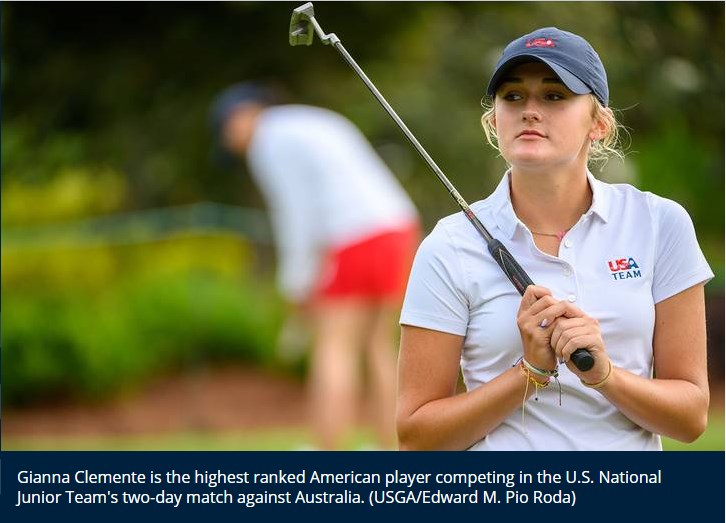
In conclusion, Allisen Corpuz’s groundbreaking participation in the U.S. Women’s Amateur Public Links Championship has far-reaching implications for junior golf. Her story highlights the importance of early competition and the positive impact of young prodigies on the development of junior golf programs. Looking ahead, Allisen’s future prospects are bright, and with continued support and training, she has the potential to achieve great success in the world of golf. Her journey serves as an inspiring example for young athletes and underscores the importance of nurturing talent from an early age.
Allisen Corpuz’s historic participation in the U.S. Women’s Amateur Public Links Championship as the youngest competitor at just 10 years old is a remarkable achievement. Her performance, characterized by impressive driving accuracy and composure under pressure, showcased her potential and marked a significant milestone in junior golf. Competing against older and more experienced golfers, Allisen’s debut highlighted the exceptional talent that young athletes can bring to the sport.
The broader impact of young golfers like Allisen on the sport of golf is profound. Her participation not only inspires other young athletes to pursue their dreams but also emphasizes the importance of early development and competition in nurturing talent. Comparisons to other prodigies such as Michelle Wie, Yani Tseng, and Mina Harigae underscore the legacy of youthful excellence in golf, demonstrating how early achievements can pave the way for future success. The positive public and media reaction to Allisen’s performance further highlights the potential for young golfers to captivate and inspire the sporting community.
The implications of Allisen Corpuz’s journey extend beyond her individual accomplishments. USGA age 10 underscores the importance of investing in junior golf programs and providing young athletes with the resources and support they need to excel. Organizations and communities must continue to create opportunities for young golfers to develop their skills and compete at high levels, ensuring a strong future for the sport.
Encouraging young athletes to pursue their passions and supporting them in their endeavors can lead to extraordinary outcomes, as evidenced by Allisen’s achievement. Her journey serves as a powerful reminder of the potential within every young athlete and the importance of fostering an environment where that potential can flourish. As Allisen continues to grow and develop her skills, her story will undoubtedly inspire the next generation of golfers, contributing to the ongoing evolution and enrichment of the sport.
Age -Tiffany Pesci Age The Journey of Joe Pesci’s Daughter Amid Fame, Controversy, and Personal Triumph
Test Age Calculator Understanding Age Calculators: Systems, Cultures, and Calculation Methods
Saber Toothed Tiger Ice Age NYT Deciphering ‘A Star is Born’: An In-Depth Analysis of a Thematic Crossword Puzzle
Norissa Valdez Age An In-Depth Look at the Life, Career, and Achievements of a Social Media Sensation
Mya Allen Volleyball Age Rising Star in High School Volleyball and TCU’s Latest Recruit
Lori Matsuoka’s Age The Unwavering Pillar Behind Bill Walton’s Legacy
Legal Drinking Age in Punta Cana, Dominican Republic A Comprehensive Guide
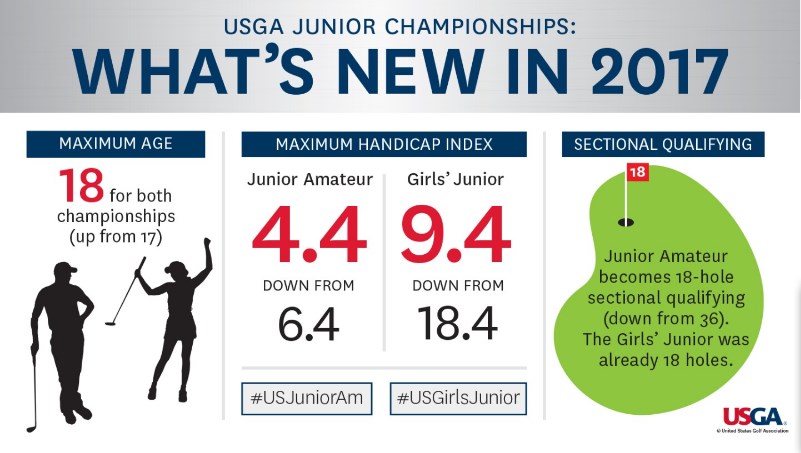
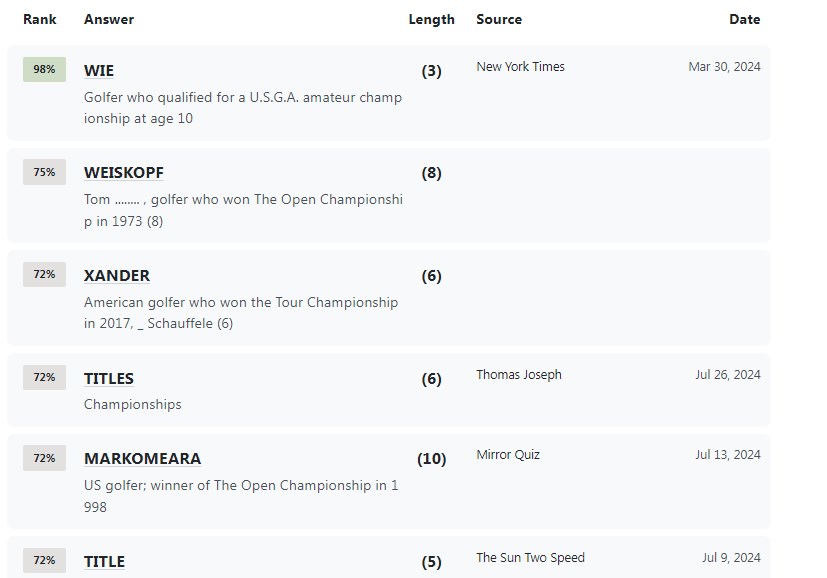
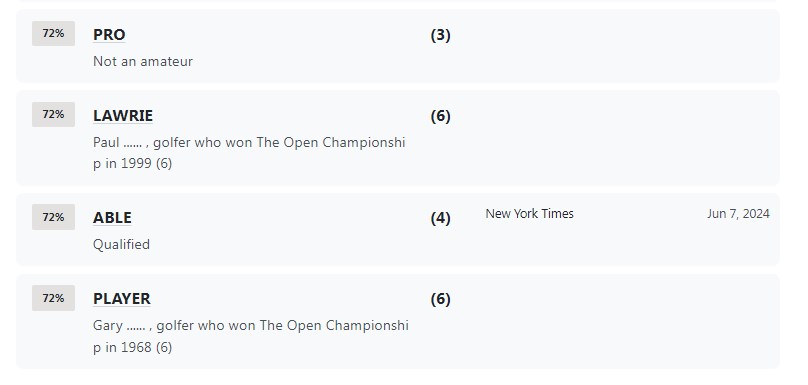
 | Sitemap | Mail
| Sitemap | Mail